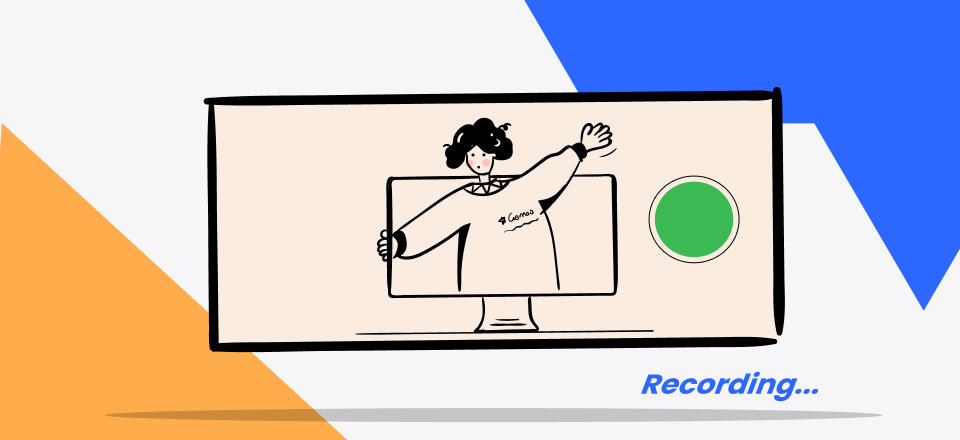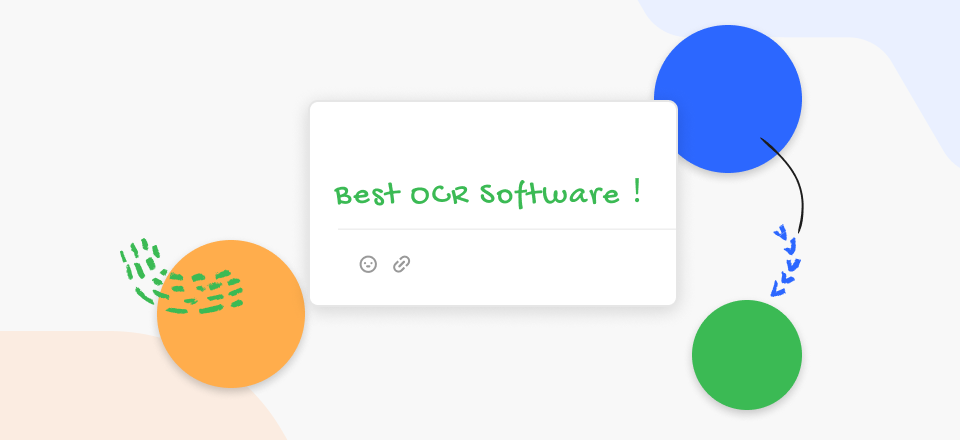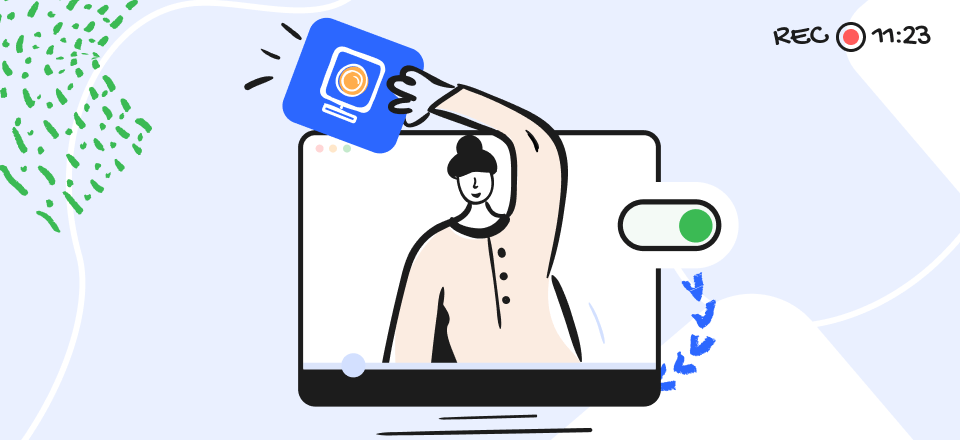Loom vs. Screencastify: A Guide for Educators

The Gemoo Team Last Updated: Aug. 18, 2023 | FEATURED IN: Blog
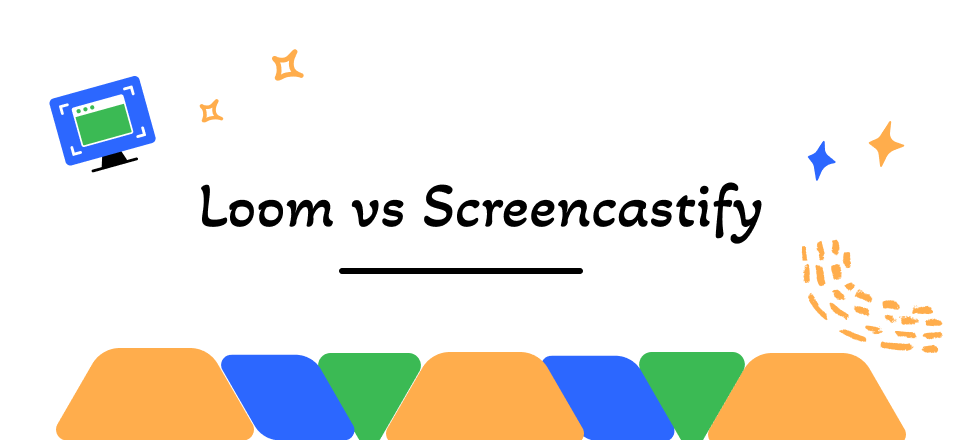
Loom vs Screencatify
Loom vs. Screencastify, these two screen-casting software allow educators to record and cast the contents of their screens. This enables them to synthesize software tutorials, educational guides, and videos that help them convey information to their students.
In this brief article, we will compare Loom vs. Screncastify to determine which one is more useful in an educational environment.
Before moving towards comparison, let’s understand both of them one by one.
Also read: Loom App/Loom Chrome Extension Not Working >
What is Loom?
Loom is a video recording, and sharing tool primarily meant for business environments. It allows you to record and share videos from your screen and webcam.
This allows teams to keep in touch, share progress, convey feedback, and disseminate training content.
This method of communication saves time that would otherwise be lost to slow and tedious meetings, which explains why more than 14 million people across 200,000 companies use Loom.
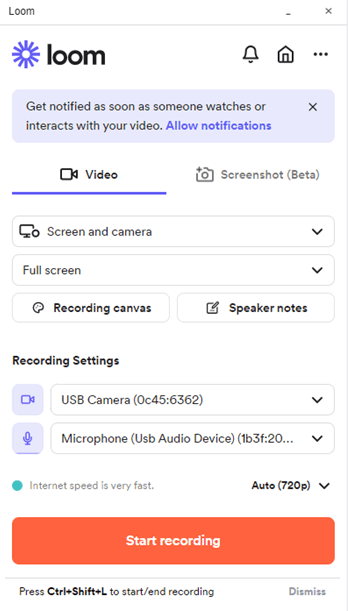
Loom Interface
Loom Key Features
- Screen and webcam recording
- Screen sharing
- Share recordings directly through the URL
- Basic video editing features including trimming and custom thumbnails
- Features like emojis, reactions, and comments to keep your team connected
- Annotation Tools
- 4K HD support
- Privacy controls
Pros
- Simple and intuitive to use
- Set up recording canvas & backgrounds
- Advanced viewer analytics to assess the reach and engagement of your videos
- Concise video messages save time and cut meetings down by 29%
- Integrates well with Slack
Cons
- Access to full features requires a subscription
- Loom is not a purpose-built education platform
- Users can only react to videos with emojis
- Uploaded videos are public by default
- Some users report sluggish speeds when using slower internet connections
- Jumping across platforms means familiarizing yourself with new interfaces, which adds complexity
User Review:
- “I love how easy Loom is to use. You click the icon on your toolbar, tell it what you want to record, and you just go. I use it all of the time to send clients videos on quick how-to’s if it is something that may be confusing via email.” –Jacob L. from g2.
G2 Rating:
Platforms Supported:
Loom is available as a lightweight Chrome extension for PC or Macs, but there is also a robust desktop app available with more features and firepower. Moreover, a mobile app is available for iOS as well as Android.
Pricing:
There are three plans available. Starter, business, and enterprise. You can choose to be billed annually or monthly. Keep in mind that monthly billing will cost you more per month than annually billed plans will.
1. Starter:
- Free
- Videos limited to 5 minutes per video
- Up to 25 videos per creator
2. Business:
- $8 per month charged annually or $10/mo charged monthly
- Unlimited creators
- Unlimited recording length
- An unlimited number of videos
- Custom branding
- Apply password protection to videos and embed links within
3. Enterprise:
- Price undefined
- Advanced privacy
- Customizable data retention policies
- Activity log export
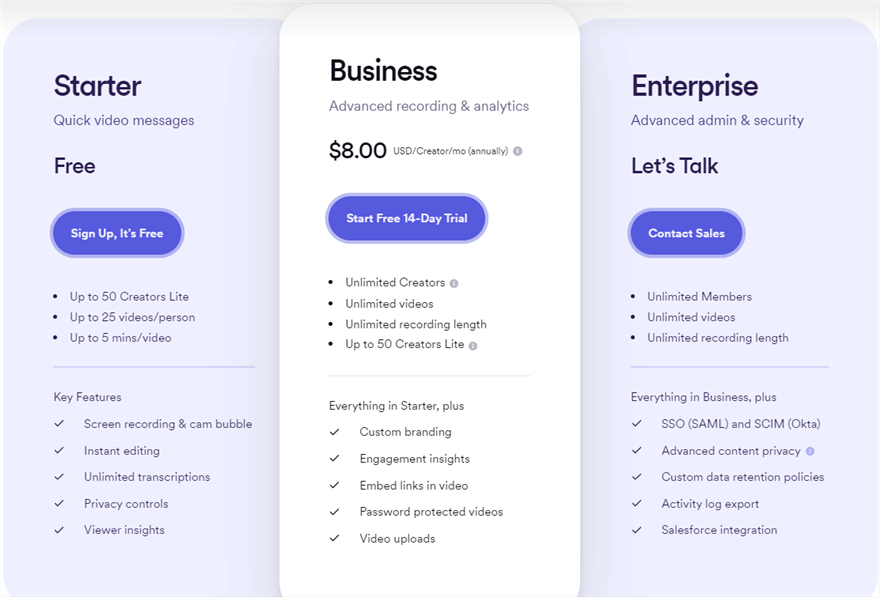
Loom Pricing Overview
Now that we know what Loom is, let’s see what Screencastify has to offer so that we can compare the two.
What is Screencastify?
Screencastify is a video creation and sharing tool designed by educators for academic applications. You can use it to record and share videos.
This allows you to hand out video-based assignments, record lessons, and receive feedback. You can also make your videos easier to view by trimming and annotating them.
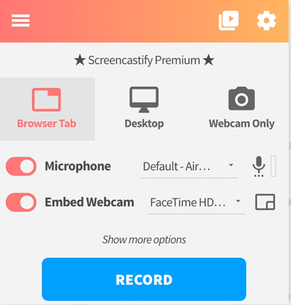
Screencastify Interface
Screencastify Key Features
- High-definition screen and webcam recording
- Video editing options such as crop, trim and annotate
- Share videos via a link or directly to YouTube or Google drive
- Assign and collect video-based assignments using magic links
Pros
- Simple, elegant, and free to use
- Extra academia-focused editing features including zoom, add title, and blur
- The editor is completely browser-based, allowing productivity on the go
- Add interactive questions within video lessons
- Integrates with Edutech and Google Classroom
Cons
- A few users have complained about video lagging and slow downloads on older computer models
- The number and length of videos are limited on the free version
- YouTube exports are watermarked
- Many features are locked behind a subscription
- The mobile version can cause some devices to lag or freeze
User Reviews
- “I love using this software to pre-record a lesson. The best feature is that it allows me to crop it once I’m done so I can make sure only the parts I need are saved.” –Natalie W. from GetApp.
G2 Rating:
Supported iOS
Screencastify is available as a chrome extension for download, so any device that can run the desktop version of chrome can run Screencastify.
Screencasitfy is not available on mobile devices yet, which may be disappointing to some.
Pricing
Screencastify is free to download and use, but there are restrictions on the free version. The company offers a starter and a pro plan for that reason. You can choose to be billed annually or monthly. Keep in mind that monthly billing will cost you more per month than annually billed plans will.
1. Free:
- Free
- 10 videos per library, 30 minutes per video
- 10 GB online storage
- 1 active assignment per user
2. Starter:
- $7 per month billed annually or $15/mo billed monthly
- Unlimited video length and number
- 25 GB online storage
- 1 active assignment per user
3. Pro:
- 10$ per month billed annually or $20/mo billed monthly
- Unlimited video length and number
- 100 GB online storage
- Unlimited assignments
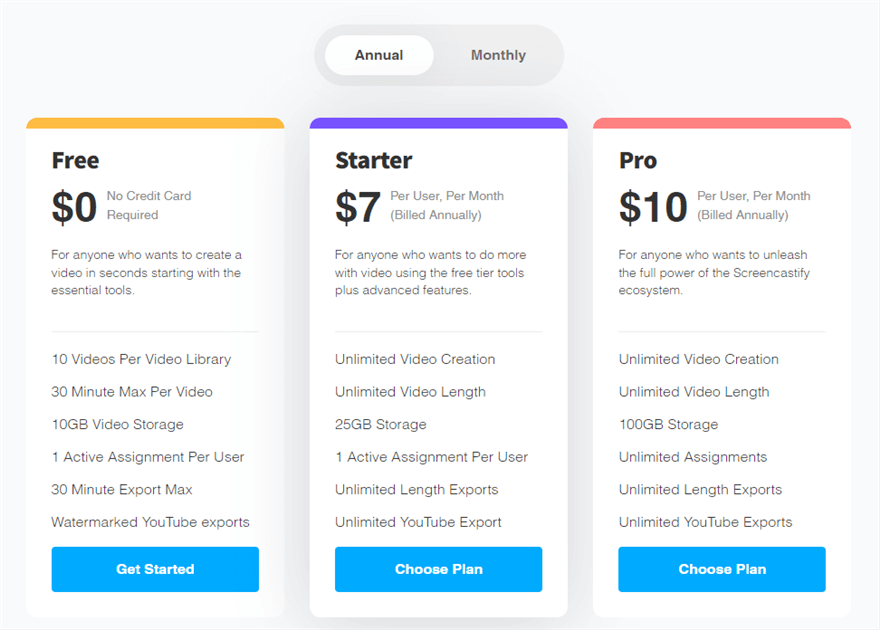
Screencastify Pricing Overview
Comparison of Loom vs. Screencastify for the Business Sector
Alternative to Tango, Loom and Screencastify are both screen-recording and screen-casting platforms that are intended for different applications.
Loom is more focused on business and office environments, whereas Screencastify is purpose-built by educators for academic purposes.
With that being said, there are some similarities between the two as well since both are video creation tools.
Here’s a table for a comprehensive overview of what to expect.
Similarities:
| Item |
Loom |
Screencastify |
| Screen recording with webcam overlay |
✔ |
✔ |
| Video sharing via link |
✔ |
✔ |
| Available as a chrome extension |
✔ |
✔ |
| Export/Upload recorded video |
✔ |
✔ |
Differences:
| Item |
Loom |
Screencastify |
| Viewer analytics |
Advanced & In-depth |
Basic |
| Security and privacy |
Some user data is shared with third parties |
Secure & private |
| Other platform integration |
Supports Slack
Developer’s kit available |
Google Classroom and Edtech |
| Built-in video editor |
Basic |
A few additional features for educational uses |
| Price |
Free plan available
Premium starts at $8 per month |
Free plan available
Premium starts at $7-$10 per month |
| Intended purpose |
Business/Office |
Education |
| Compatible devices |
PC, Mac, Android, iOS |
PC, Mac |
Loom vs. Screencastify for Educational Applications
In an academic setting, the user’s needs shift a little. For instance, a user interface that is intuitive and easy to use becomes much more critical.
This is due to the fact that users in an educational setting may lack the time and resources to conduct proper training should the software have a steep learning curve.
Screencastify was intended to be used for educational applications, but that does not mean that Loom isn’t a capable tool all on its own. This side-by-side comparison should help clarify things a little.
Similarities:
| Item |
Loom |
Screencastify |
| Screen recording and sharing |
✔ |
✔ |
| Share/Upload/Export video |
✔ |
✔ |
| Trim and annotate videos |
✔ |
✔ |
| Webcam overlay |
✔ |
✔ |
Differences:
| Item |
Loom |
Screencastify |
| 4k support |
Yes |
No |
| Embed interactive questions in video |
No |
Yes |
| Supported platforms |
Browser extension, Windows, macOS, Android, iOS |
Browser extension only |
| Pricing |
Free plan available
Premium starts at $8 per month |
Free plan available
Premium starts at $7-$10 per month |
| Privacy |
Some user data is shared with third parties |
No user data sharing with third parties |
| Video storage |
Loom’s servers |
User’s drive |
| Share directly to YouTube or Google drive |
No |
Yes |
| Delete created videos |
User can only archive |
User can permanently delete |
Tip. An Alternative of Loom and Screencastify
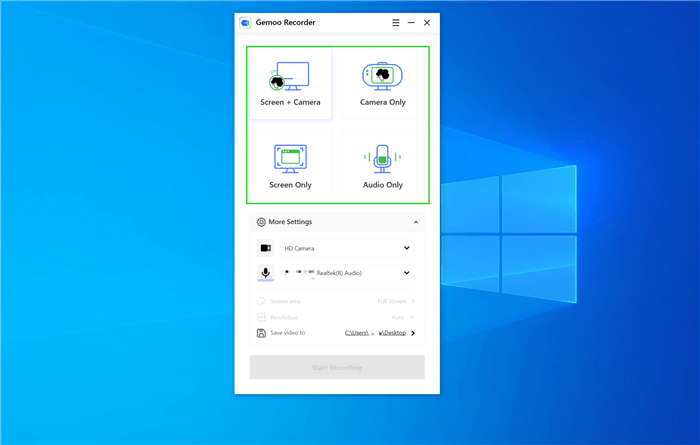
Record screen, webcam or audio
If you think that the functions of Loom or Screencastify are too complicated, or cannot meet your screen recording needs, then we recommend a powerful loom alternative to you – Gemoo Recorder. Whether you want to create video tutorials and online courses, or you want to market your business to online customers, or record highlights in your favorite gameplay, then Gemoo Recorder can achieve it. There are key features of Gemoo Recorder:
- When recording with your webcam, you choose some of your favorite images as your avatar, use the camera with different filters, and add various virtual backgrounds to hide your real location.
- Insert shapes, text, memes, numbers or other notes during recording. Express your thoughts more clearly.
- Choose the screen range freely. Whether it is full screen, tab page, window, or custom area, you can record as you like.
- With 4 recording modes, you can choose to record Screen & Camera, Camera Only, Screen Only, and Audio Only.
Price: Free to Use.
Supported system: Web, Windows and macOS.
If you are attracted by Gemoo Recorder, don’t hesitate to download it to record your screen now.
Get It Free
Final Words
Screen casting and recording apps are useful tools for both business and educational applications. Screencastify is built more for an academic setting, whereas Loom is better applied in a business or office setting.
Either software can be used in both settings, but their specific sets of features may present a problem for some users. In the end, Loom is objectively better for business applications, whereas Screencastify excels at educational and academic uses.
If want to know more about the comparison of Loom and Zoom, you can also check the guide on Loom vs Zoom to compare which one is the best >

The Gemoo Team The Gemoo Team is committed to building products that help people effectively communicate and collaborate.







